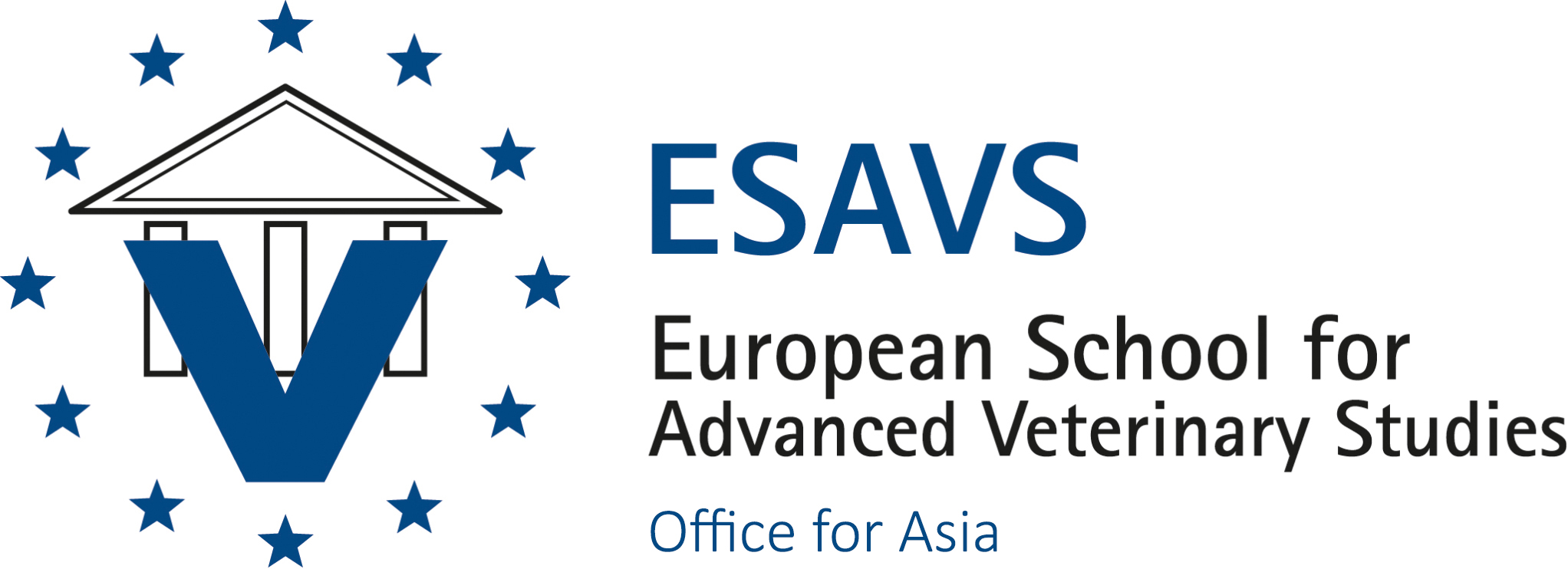Dermatology
Individual Courses and Comprehensive Study Program
The ESAVS Asia Dermatology program consists of 6 one-week modules or 3 two-week modules. The courses can be taken in any order. The course masters and tutors are Diplomates in Dermatology (ACVD/ECVD/DVD) or diplomates, specialists and University teachers in the related disciplines within the program.
Course structure: Each day follows a similar general pattern with lectures and seminars in the morning and wet labs/practical classes and case studies. Tutors’ problem-solving cases and discussion of participant’s cases are included. Between the residential courses participants have access to distance learning modules.
Language: Courses in the South East Asia will be held in English. Courses in China will be held in English with consecutive translations to Chinese.
Dermatology 1:
In this first introductory course, the basic principles of dermatology are reviewed. First, the biology of the skin, with special attention to the mechanisms of innate and acquired skin immunity and to the skin microbiome. Second, the approach to the dermatological patient and how the diagnosis is made: the problem-oriented approach (POA), the decision-making process, the adequate use of diagnostic tests and the dual-processing model. Among the diagnostic tests, special attention is given to cutaneous histopathology, considered the most powerful diagnostic tool. Furthermore, the students will learn how to design effective treatment plans under the paradigm of evidence-based medicine and the principles of conservative prescription.
In the second part of the course, the main bacterial diseases of the skin will be reviewed. From common diseases such as superficial bacterial folliculitis to severe and uncommon conditions such as necrotizing fasciitis. The adequate use of diagnostic techniques (cultures, molecular techniques) and the therapy for skin infections, including those caused by multi-resistant organisms will be discussed.
Dermatology 2
This course focuses on the diagnosis and treatment of skin diseases caused by fungi, parasites and viruses. The superficial mycosis (dermatophytosis, Malassezia), but also the less common subcutaneous mycosis (sporotrichosis, chromomycosis, hyalomycosis) and systemic mycosis (cryptococcosis) are discussed in depth. The main diseases caused by ectoparasites in dogs and cats (scabies, notoedric mange, demodicosis, cheyletiellosis, otoacariasis) and their diagnosis, treatment and prevention are also reviewed. Special attention is devoted to canine leishmaniasis, its etiopathogenesis, diagnosis, treatment and prevention (vaccines). Finally, cutaneous viral infections of dogs and cats are discussed, with a special focus on papillomavirus infections.
Dermatology 3
This course focuses on the diagnosis and treatment of allergic and autoimmune skin diseases. The first part deals with skin allergies, especially with atopic dermatitis. The understanding and management of atopic dermatitis have experienced a deep change in the last years. The use of the new therapeutic tools (JAK inhibitors, monoclonal antibodies) is discussed in detail in a framework of medicine that tends to be more individualized (different treatments for each patient). In the second part, cutaneous autoimmune diseases are discussed. Immune mechanisms and pathogenesis of each entity are reviewed, followed by diagnostic criteria and treatment. Special attention is given to the pemphigus group, but other auto-immune diseases such as uveo-dermatologic syndrome or alopecia areata are also discussed.
Dermatology 4
This course consists of three different parts. The first part analyses immune-mediated skin diseases, other than allergies and those with a clear autoimmune origin (which are discussed in Dermatology Course III). This is a large and heterogeneous group of entities with a suspected immune origin (they respond to treatment with immunosuppressive drugs), but whose specific molecular mechanisms remain unknown; such as lupus erythematosus (all types), vasculitis, ischemic dermatopathy or Sweet syndrome, to mention a few examples. The second part focuses on endocrine, metabolic and nutritional diseases and some prevalent seborrheic syndromes. Finally, in the third part, some diseases of environmental origin are analysed and discussed.
Dermatology 5
This course has three different parts. The first part of this course focuses on a group of dermatological diseases of enormous importance that do not stop growing: the genodermatoses or diseases of genetic origin. The improvement in the molecular tools has allowed the identification of the genetic defect underlying many common hereditary skin diseases, such as ichthyosis, paw pad hyperkeratosis or acral mutilation syndrome. The clinical presentation, diagnosis and treatment of the most prevalent genetic skin diseases will be discussed in detail. Also, in a wet lab, participants will learn how to investigate the genetic origin of a suspected genetic condition using new molecular tools. The second part of the course focuses on the etiopathogenesis, diagnosis and treatment of skin diseases due to behavioural disorders. The third part discusses the clinical picture, diagnosis and treatment of the main skin neoplasms.
Dermatology 6
This course consists of two differentiated teaching blocks. The first focuses on the discussion of diseases that affect special anatomical regions, such as ears, claws, anal sacs and eyelids and periocular skin. These anatomic regions have a different structure and function than the rest of the skin and present specific problems. In this block, special attention will be devoted to otitis externa (etiopathogenesis, diagnosis and treatment) and it includes an otic cytology wet-lab, a video-otoscopy wet-lab and a lecture on imaging (CT, MNR) of the ear. The second block discusses the dermatological diseases of exotic small mammals (ferrets, rabbits, hamsters). The main parasitic, infectious, allergic, endocrine and neoplastic diseases of these species will be discussed. There will also be a hands-on lab for practising the physical examination of these species.
Upcoming Courses
|
Course |
Date | Registration |
| Dermatology 1 (Course 1/6), Bangkok/Thailand, Dr. Panakova & Dr. Varjonen | 28. - 01. Nov 2024 | |
| Dermatology 1 (Course 1/6), Delhi/India, Dr. Panakova & Dr. Varjonen | 04. - 08. Nov 2024 | |
| Dermatology 2 (Course 2/6), Bangkok/Thailand, Dr. Bourgeois & Dr. Miller | 04. - 08. Nov 2024 | |
| Dermatology 3 (Course 3/6), Bangkok/Thailand, Dr. Gedon & Dr. Bettenay | 26. - 30. May 2025 |


